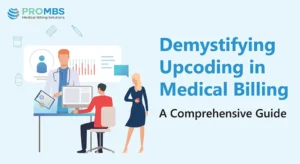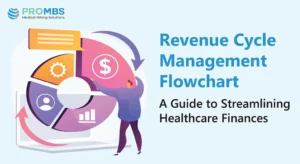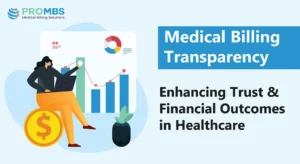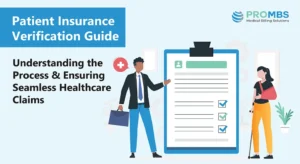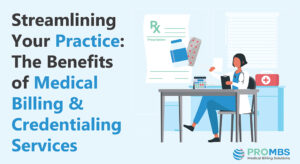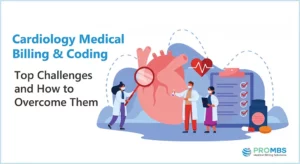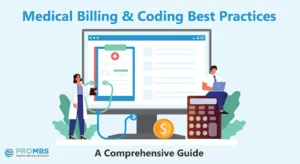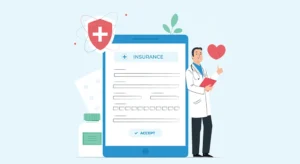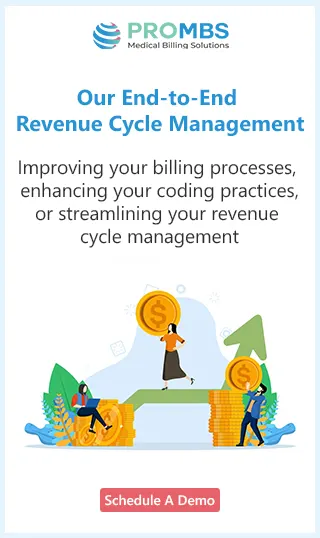Tips For Error-Free Claims
Have you ever wondered how to file an insurance claim without encountering errors? Filing a claim can be a complex process, but you can ensure a successful outcome with the right knowledge. In this blog post, we will provide you with essential tips to help you file an error-free insurance claim. Whether it’s a health insurance claim, a critical illness claim, or a term life insurance claim, these tips will guide you through the process. Let’s dive in Denial Management Services!
Essential Tips for Success Claims
The important tips for a complete billing claim are given below:
1. Understanding Claim Eligibility:
Before you proceed with filing a claim, it’s crucial to determine whether the event is claimable and falls under your insurance policy. Review your policy documents to identify the coverage and policy applicable to your situation. If you’re unsure, consult your insurance provider for clarification.
2. Determine Claim Eligibility:
Review your insurance policy to determine if the event or incident is covered. Consult your policy documents for specific details regarding claimable events and the corresponding policy.
3. Document the Incident:
Gather all relevant information, documentation, and evidence related to the incident. This may include photographs, videos, receipts, witness statements, or police reports, depending on the nature of the claim.
4. Notify Your Insurance Company:
Contact your insurance company as soon as possible to report the incident and initiate the claim process. Follow their instructions regarding claim submission.
5. Provide Detailed Information:
Fill out the claim form accurately, providing all necessary details about the incident, including date, time, location, description of damages, and any injuries sustained. Attach supporting documents as required.
6. Cooperate with the Insurance Adjuster:
An insurance adjuster may be assigned to investigate your claim. Cooperate fully by providing requested information and promptly responding to their inquiries.
7. Assess and Resolve the Claim:
The insurance company will evaluate the claim, review the provided evidence, and determine the coverage and compensation amount. If the claim is approved, the insurer will issue the payment or undertake the necessary repairs/replacements.
Tips for Filling an Error-Free Claim
Tips for filling out an error-free claim are given below:
1. Understand the Corrective Process:
Before proceeding with the claim filing, it’s essential to familiarize yourself with the corrective process specific to your region. Different authorities and insurance providers may have distinct procedures for correcting errors in submitted claims. Visit the official website of your tax authority or insurance provider to understand the steps involved in rectifying errors.
2. Ensure Accurate Documentation:
Accurate documentation is the foundation of error-free claims. Take the time to document patient encounters thoroughly and ensure that all relevant information is recorded. Use clear and concise language, and be specific when describing diagnoses, procedures, and treatments. Avoid ambiguous or vague terms that may lead to coding errors. By providing precise documentation, you can minimize the risk of claim rejection.
3. Regularly Review and Update Codes:
Stay up to date with the latest coding guidelines and updates. Review the ICD 10 codes regularly and make any necessary updates to your coding practices. It is essential to have access to accurate and updated code references to ensure proper coding and billing. Utilize reliable resources and tools to verify and cross-reference codes, reducing the chances of errors and claim rejections.
4. Double-Check Claims for Errors:
Before submitting claims, establish a system for double-checking them for errors. Encourage your staff to carefully review each claim and verify that all information, including patient demographics, insurance details, and coding, is accurate and complete. Implement a proofreading process to catch any potential mistakes before submitting the claims. This attention to detail will help prevent claim rejections and ensure timely payments.
5. Monitor and Analyze Rejected Claims:
Regularly monitor and analyze the reasons for claim rejections. Identify patterns or common issues that lead to rejections and denials. Utilize practice management software that can provide detailed reports on claim rejections and denials. By identifying recurring problems, you can take proactive measures to address them. This may involve further education and training, updating your practice management software, or implementing additional checks and balances in your coding and billing processes.
Why Choose Pro Medical Billing Solutions for Denial Claims?
Opt for Pro Medical Billing Solutions LLC to navigate the complexities of denial claims with unparalleled expertise. Our dedicated team ensures maximized reimbursements through meticulous claim reviews, personalized appeal strategies, and comprehensive tracking, making us the premier choice for turning denials into approvals.
FAQs
What should I do if my claim is rejected?
If your claim is rejected, identify the reason for the rejection and take appropriate corrective actions. Review the rejection notice and rectify the errors. If needed, consult with a medical billing professional or contact the insurance provider for further guidance.
Can I make adjustments to a previously submitted claim?
Yes, you can make adjustments to a previously submitted claim. However, the process may vary depending on the specific requirements of your insurance provider or tax authority. Refer to the guidelines provided by the relevant authority for instructions on correcting errors in past claims.
How can I ensure the accuracy of my claims?
To ensure claim accuracy, establish robust documentation practices, implement regular quality checks, and stay updated with the latest coding guidelines and regulations. Additionally, consider investing in training programs for your billing and coding staff to enhance their expertise.













